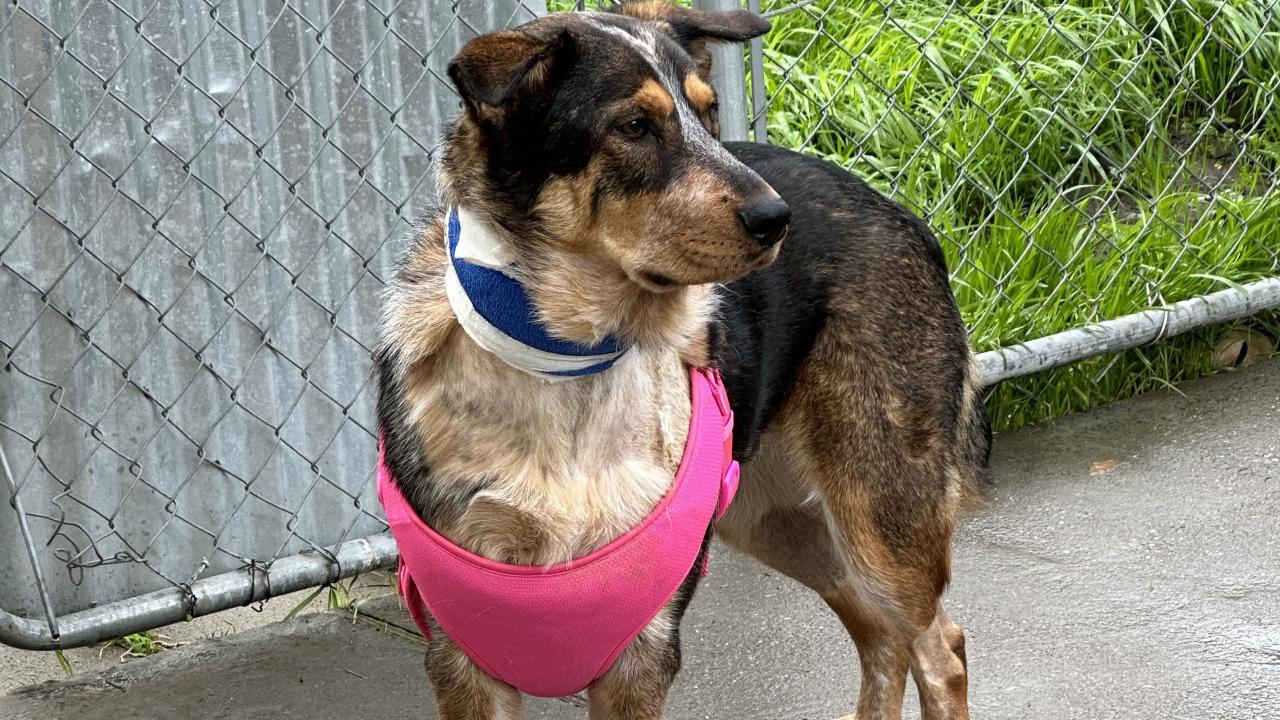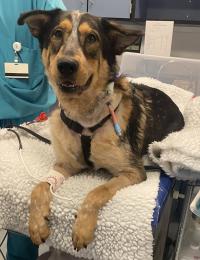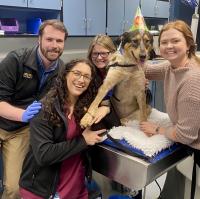
Hemodialysis Helps Dog Survive Antifreeze Poisoning
Defies Odds of 10% Survival Rate
In the fall of 2022, Ana Alexander found Mija, a 2-year-old Australian cattle dog mix, abandoned near her workout gym. She took the pup home in hopes of delivering her to a shelter that could find her a forever home. After trying several shelters to no avail, Alexander changed course to re-homing Mija through her own efforts.

During this time, Mija got adventurous in Alexander’s garage and chewed into a bottle of antifreeze. After Mija began vomiting, Alexander rushed her to a local veterinary emergency room where she was given discouraging news. The antifreeze (ethylene glycol) poisoning was causing her kidneys to fail, and she only had about a 10% chance of survival.
“Well, that 10% was all I needed to hear,” Alexander said. “She was still so full of life. I couldn’t give up on her.”
So, Ana did the only thing possible to try to save Mija – took her to the UC Davis veterinary hospital, the only facility in Northern California with the capability of treating her extensive organ injuries.
Further testing at UC Davis confirmed kidney failure from the antifreeze poisoning. She was given a guarded prognosis due to the degree of kidney damage. To survive, she needed hemodialysis to take over the job of her kidneys. Even with that aggressive approach, there was only a small chance that her kidneys would recover, and that would take many rounds of dialysis if it were to occur at all.
Alexander chose to move forward with dialysis treatments in the hope of maintaining a good quality of life for Mija for as long as possible while dialysis bought time to see if her kidneys had any chance of recovering.
In her initial hospitalization, Mija received two dialysis treatments and was also administered a feeding tube to better take in medication and nutrition. She did well with the initial treatments and was discharged until her next dialysis was needed in just a few days.
Alexander was in for a long road of nursing care going forward. Faculty members Drs. Larry Cowgill and Carrie Palm, along with internal medicine resident Dr. Sarah Michalak, urinary and extracorporeal therapies fellow Dr. Dennis Woerde, and Hemodialysis and Blood Purification Unit technicians John Kirby, Sean Naylor, and Ashley Soares taught Alexander how to tube feed Mija and detailed the extent of home care needed. To her credit, Alexander took on the tasks with the endless energy and spirit that Mija needed.

Over the next four weeks, Mija received eight dialysis treatments. She then progressed to a weekly appointment schedule for a month to monitor her kidney values and blood pressure. At this time, the feeding tube was removed, and Mija was able to eat on her own. As her condition gradually improved, she only needed to be evaluated monthly. Throughout the process, she was maintained on medication and a prescribed kidney-enhancing diet.
Now, nearly a year later, Mija’s kidney values have improved drastically from the initial injury. While she may always have some degree of chronic kidney disease, her condition is no longer critical and life-threatening, and Alexander reports she is full of energy and is doing exceptionally well. She continues to be on medication and a modified diet to treat the disease.
“She’s still so full of love and life,” Alexander said. “She’s doing great.”
Today is the one-year anniversary of Alexander rescuing Mija. What was originally meant to be a brief stay until she could find a new home turned out to be Mija finding her forever home all along. She’s now a permanent member of Alexander’s pack which also includes German shepherd Jade and Chihuahua Maui.
# # #
